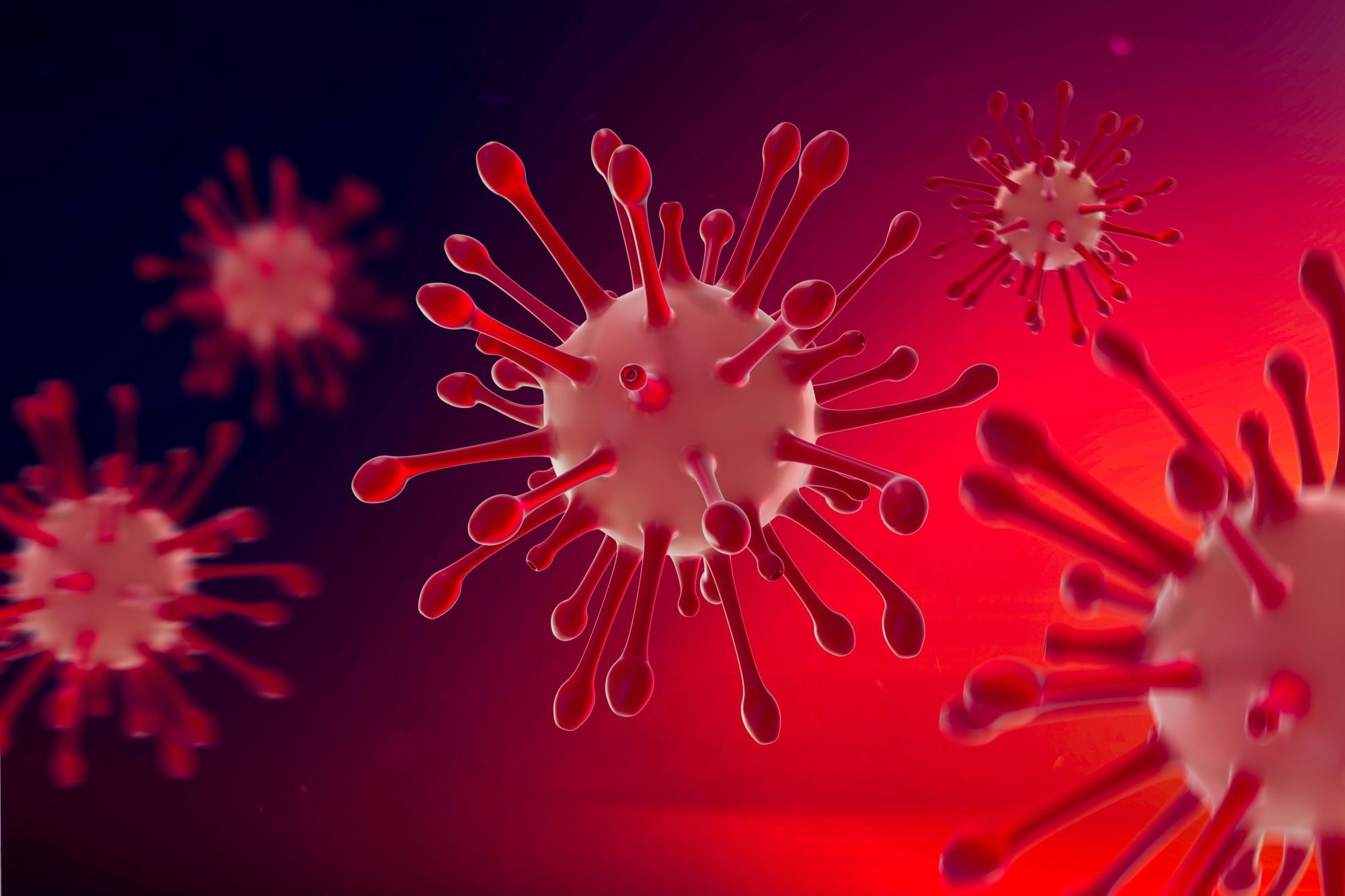In a recent study published in the Virus Research journal, researchers assessed the impact of dysregulation in cell signaling events on coronavirus disease 2019 (COVID-19) severity.
 Study: SARS-CoV-2 mediated dysregulation in cell signaling events drives the severity of COVID-19. Image Credit: MIA Studio/Shutterstock
Study: SARS-CoV-2 mediated dysregulation in cell signaling events drives the severity of COVID-19. Image Credit: MIA Studio/Shutterstock
Background
To eradicate the illness, an immune response balanced against an unknown pathogen is essential. When cellular toll-like receptors (TLRs) detect severe acute respiratory syndrome coronavirus 2 (SARS-CoV-2), a sequence of cell signaling events is quickly triggered as part of the body's natural defense mechanism in response to the infecting virus. However, if there is a loss in this equilibrium, the immune system becomes impaired and cannot maintain properly controlled transcription and translation of signaling components.
As a result, the circulatory systems release an excessive amount of proinflammatory mediators, which finally leads to a "cytokine storm" and COVID-19 clinical disorders. The SARS-CoV-2 infection is followed by low levels of interferons (IFNs) and high levels of pro-inflammatory cytokines, which reflects an aberrant cell signaling event and explains the causes for enhanced pathogenicity and severity of COVID-19.
Clinical manifestations of COVID-19 due to dysregulated cell signaling pathways
Respiratory symptoms:
The most common signs of COVID-19 respiratory problems include hypoxia, pneumonia, lung edema shown as acute lung injury (ALI), and acute respiratory disease syndrome (ARDS), which can typically result in lung failure. Diffuse alveolar destruction and increased endothelial and epithelial cell permeability, fluid leaking into the pulmonary interstitium, and severe disruption of gas exchange are the main pathological alterations seen in such patients. The production of various common inflammatory cytokines, such as interleukin (IL)-1-beta, IL-6, IL-8, IL-18, and tumor necrosis factor (TNF)-alpha, is strongly linked to the onset of these diseases.
Neurological symptoms:
Anosmia, ageusia, and headache are the most conspicuous neurological symptoms of COVID-19, with a further potential link with stroke, impaired consciousness, encephalopathy, and seizure. The SARS-CoV-2's impact on human nerve cells increases the likelihood that the virus will be able to pass through the blood-brain barrier (BBB) and invade the central nervous system (CNS). IL-1 and IL-6 can increase neuroinflammation by crossing the BBB, which can facilitate the penetration of virus-infected monocytes and peripheral white blood cells.
Cardiovascular symptoms:
When the SARS-CoV-2 virus infects cardiac cells, the expression of the angiotensin-converting enzyme-2 (ACE-2) receptor can boost the recruitment of adaptor proteins necessary for the activation of inflammatory signaling pathways, which may lead to the generation of inflammatory cytokines. As a result, a variety of heart problems develop, including myocarditis, a lack of contractile function, destruction to the cardiomyocytes, and the production of markers of cardiac injury that can eventually cause ischemia, coagulation, vascular inflammation, and thrombosis.
Renal dysfunction:
Additionally, COVID-19 has been linked to acute renal damage and kidney function decline (AKI). A serious issue with AKI has been identified in hospitalized individuals with severe COVID-19. Although there is no association found with SARS-CoV-2, the viral infection in the kidney is thought to trigger TLR4 mRNA in tubular cells that induce ischemia, tubular necrosis, and inflammation. The kidney is a direct target for SARS-CoV-2-related pathogenesis due to ACE2 expression on kidneys, adhesion of platelets with fibrin in peritubular capillaries, neutrophil recruitment induced by the complement, TLR stimulation, or Nod-like receptor protein 3 (NLRP3) inflammasome formation.
Major biomarkers of abnormal cell signaling events:
Increased levels of IL-6 appear to increase C-reactive protein (CRP) levels, disrupt T cell function, and decrease albumin, transferrin, and fibronectin synthesis. Additionally, a poor COVID-19 prognosis is observed in the presence of cytokine overproduction. In severe COVID-19 cases, the serum TNF-alpha level is excessively high, which has pro-inflammatory effects on its activity. The poor prognosis of COVID-19 is believed to be related to the rising serum levels of this cytokine, which is comparable to those of SARS and Middle East respiratory syndrome (MERS).
The IL-1 family of cytokines is the main inflammatory cytokines generated by inflammasome activation accompanied by NF-B induction. Increases in IL-1 are significantly linked to COVID-19 severity. Casp1p20, a proteolytically activated caspase-1, promotes the activation of substrates such as the inflammatory cytokines IL-1-beta, IL-18 as well as gasdermin-D and has been consistently found in the serum of COVID-19 patients as well as SARS-CoV-2-infected macrophages and monocytes. Therefore, in severe COVID-19, the identification of active caspase-1 is a key biomarker.
Lactate dehydrogenase is released from damaged cells and is thought to be a possible indicator of vascular permeability in lung injury mediated by the immune system. Increased odds of having severe COVID-19 disease were connected with higher levels of lactate dehydrogenase (LDH).
Overall, the study findings demonstrated the types of clinical outcomes resulting from the dysregulation of cellular signaling pathways as well as the key cellular components involved in the stimulation of imbalance and disease severity.